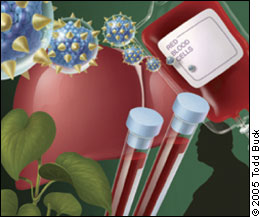
Am Fam Physician. 2005;71(6):1044
In our last issue, I alluded to the arrival of Joyce Merriman as AFP’s executive editor, but I didn’t have the space to do Joyce or her position justice. Both are new arrivals, and both deserve some introduction.
First, the position. While it may not be obvious to readers, the editorial work that produces AFP is really conducted by two teams of editors interacting closely with one another. Jay Siwek, M.D., coordinates the work of a three-person staff and 13 physician editors who handle the front end of the editorial operation, soliciting articles, managing the peer review process, requesting revisions, verifying the evidence, and editing for factual accuracy and relevance to family medicine.
The other editorial team, which Joyce now leads as executive editor, has traditionally been led by a managing editor (most recently, Janis Wright). It consists of a dozen professional editors who handle the back end of the process, working with AFP authors and physician editors to turn the authors’ manuscripts into logically organized, readable articles.

Given the importance of clinical accuracy and family medicine orientation to AFP, it is easy to overestimate the value of the front end of the operation and underestimate the value of the back end. In fact, Jay and Joyce, and their respective teams, make different but equally important contributions to the journal you know and love. Where the physician editors do the carpentry necessary to ensure that an article has a sturdy frame, the professional editors do the rest, putting up sheet rock, painting, installing windows, and hanging cabinets to turn that bare frame into the kind of article you’re used to reading in AFP.
This “finish work,” however, is by no means all that Joyce and her team are responsible for. In appointing Joyce executive editor rather than managing editor, the Academy is recognizing that, as good as it is, AFP can be better. It can be more useful, more readable, more versatile, and more efficient in its operations. Having the right leader for the professional editors, and giving that leader a greater scope of power and responsibility, is an important step in realizing those improvements.
In Joyce, we have found that leader. She comes to AFP with considerable experience in clinical publishing, having worked most recently as editorial director for the Association of periOperative Registered Nurses, Inc. (AORN) in Denver. In that role, she supervised a staff of as many as 13 in producing the AORN Journal and a variety of periodical and other publications. Before becoming editorial director, she supervised the successful design and launch of Surgical Services Management, a monthly management magazine started by AORN in 1994. Before her years with AORN, she held a variety of editorial and managerial positions with the National Cattlemen’s Association and the Livestock Conservation Institute.
Joyce’s experience and editorial expertise are not all she brings to AFP. Her organized mind, her common sense, her ability to listen, her efficiency, and her people skills have enabled her to leap gracefully to the driver’s seat of a journal careening along at the breakneck pace of 24 issues per year, to gather up the reins, and to keep the AFP stage coach on the road. Joyce has enormous tasks ahead of her—tasks that include filling vacant positions, learning AFP procedures, and getting acquainted with the AFP audience, for a start. She is well on her way already, and although we trust that you won’t feel a bump during this transition, I expect that you will see great things from AFP in the coming months and years. If you have comments or suggestions for Joyce, you can e-mail her atafpedit@aafp.org.